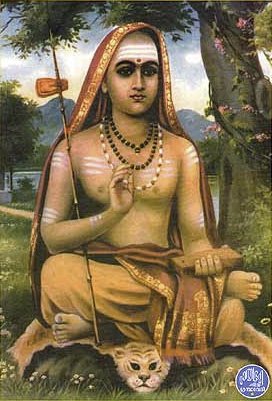Katha Upanishad with Shankara’s Commentary
by S. Sitarama Sastri | 1928 | 23,822 words
The Katha Upanishad is a collection of philosophical poems representing a conversation between the sage Naciketas and Yama (god of death). They discuss the nature of Atman, Brahman and Moksha (liberation). The book is made up of six sections (Valli). This commentary by Shankara focuses on ‘Advaita Vedanta’, or non-dualism: one of the classical ort...
Verse 2.3.17
अङ्गुष्ठमात्रः पुरुषोऽन्तरात्मा सदा जनानां हृदये संनिविष्टः ।
तं स्वाच्छरीरात्प्रवृहेन्मुञ्जादिवेषीकां धैर्येण ।
तं विद्याच्छुक्रममृतं तं विद्याच्छुक्रममृतमिति ॥ १७ ॥aṅguṣṭhamātraḥ puruṣo'ntarātmā sadā janānāṃ hṛdaye saṃniviṣṭaḥ |
taṃ svāccharīrātpravṛhenmuñjādiveṣīkāṃ dhairyeṇa |
taṃ vidyācchukramamṛtaṃ taṃ vidyācchukramamṛtamiti || 17 ||17. The Purusha of the size of a thumb, the internal atman, is always seated in the heart of all living creatures; one should draw him out from one’s own body boldly, as stalk from grass; one should know him as pure and immortal; one should know him as pure and immortal.
Shankara’s Commentary:
Com.—Now the sruti says this, for the purpose of concluding the drift of all the vallis. The Purusha of the size of a thumb, the internal atman, as previously explained, is seated in the heart of all men. One should draw him out, i.e., separate him from one’s own body; ‘like what’ is explained. As the stalk within the grass, from the grass boldly with self-composure. Him, so drawn out from the body, one should know as Brahman previously described, pure, immortal and mere intelligence. The repetition and the use of the particle ‘iti’ are to show that the Upanishad ends here.
